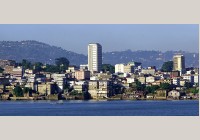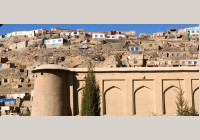Malayalam
Swaagatam – Welcome
Malayalam (മലയാളം), should not to be confused with Malay, a language spoken in Malaysia. It belongs to the Southern branch of the Dravidian language family. Although closely related to Tamil, Malayalam is more influenced by Sanskrit than Tamil. Scholars believe that the common ancestor of Tamil and Malayalam split in the 9th century AD..
Mandarin (Chinese)
Huānyíng- Welcome
Mandarin (pŭtōnghuà, guóyŭ, huáyŭ) is the most widely spoken of all Chinese dialects spoken as a first language in a vast area of northern and southwestern mainland China. There is also a huge diaspora of Mandarin speakers in Brunei, Cambodia, Hong Kong, Indonesia, Laos, Malaysia, Mauritius, Mongolia, Philippines, Russia, Singapore, Taiwan, Thailand, United Kingdom, USA, and Vi..
Marathi
Krupayaa aatuyaa – Welcome
Marathi (also known as Maharashtri) is a member of the Indo-Aryan branch of the Indo-European language family. It is closely related to Hindi and Punjabi. It is spoken as a first language by 72 million people and by another 3 million people as a second language in India, primarily in the state of Maharashtra. Marathi is the fourth largest langu..
Mende
Á seneo – Welcome
Mende (Mɛnde yia), also known as Boumpe, Hulo, Kossa, and Kosso, belongs to the Southwestern group of the Mande branch of the Niger-Congo language family. It is spoken by about 1.48 million people primarily in southern Sierra Leone and by some 20,000 people in neighboring Liberia (Ethnologue). Its closest relatives are Loko, spoken in ..
Mongolian
Tavtai moril, sain irsenee – Welcome
Mongolian, a macrolanguage, is the best-known and largest member of the Mongolic language group. It has two principal members: Mongolian Halh (Central Mongolian) and Peripheral Mongolian (Inner Mongolian).
Status
Mongolian Halh is spoken by over 2.35 million people in the Mongolian Peo..
Nahuatl
Ximocehuitzino – Welcome
The term Nahuatl (nawatlahtolli) covers a number of closely related languages that form the southernmost branch of the Uto-Aztecan language family. It serves as a general name for 27 linguistic variants (Ethnologue), some mutually unintelligible, that are spoken by over 1.6 million people in Mexico today. There are more speakers of Nahuatl tha..
Navajo
Yah aninaah – Welcome
Navajo ( Diné Bizaad ), also known as Diné, belongs to the Athabaskan branch of the Na-Dené language family. Most of the Diné homeland is in northern Arizona, but it also extends into southern Utah and northwestern New Mexico. It is the largest language of the Na-Dené language family.
Status
With some 170,000 speakers, Navajo is one of the few ..
Nepali
Swagatam – Welcome
Nepali, a member of the Indo-Aryan branch of the Indo-European language family, is a macrolanguage spoken by 12,300,000 in Nepal (2011 census), 2,870,000 In India (2001 census), and 156,000 in Bhutan. The worldwide population of Nepali speakers is estimated at 15,360,100. The language is also called Eastern Pahadi, Gorkhali, Gurkhali, Khaskura..
Norwegian
Velkommen – Welcome
Norwegian belongs to the East Scandinavian group of the Germanic branch of the Indo-European language family (Ethnologue). It is closely related to Swedish and Danish. The three languages developed from Old Norse which was spoken in the areas of Scandinavia that are now Norway, Denmark and Sweden. To this day, Danes, Norwegians, and Swedes can communicate with each other, although Norwegia..
Ojibwa
Biin dig gain – Welcome
Ojibwa (Ojibwe, Ojibway) belongs to the Ojibwa-Potawatomi group of the Algonquian branch of the Algic language family. Speakers of Ojibwa call it Anishinaabemowin or Ojibwemowin. It is a macrolanguage comprised of a number of autonomous varieties with no standard writing system. Several varieties of Ojibwa are spoken in Canada from Quebec, through Ontario, Manitoba and..
Oriya
Aasantu – Welcome
Oriya, also known as Odisha, a member of the Indo-Aryan branch of the Indo-European language family. It is spoken as a first language by 32.1 million people most of whom live in the Indian state of Odisha, although there are also significant Oriya-speaking populations in West Bengal, Jharkhand, Chhattisgarh and Andhra Pradesh (Ethnologue).
Oriya is thought..
Oromo
Simad’d’a – Welcome
Oromo, also called Afaan Oromo and Oromiffa, is a member of the Cushitic branch of the Afro-Asiatic language family. It is a macrolanguage language of Ethiopia, Kenya, Somalia, Eritrea, and Djibouti, by close to 40 million people, making it Africa’s the fourth most widely spoken language after Hausa, Arabic, and Swahili.
Status
It is the..
Pashto
Pe kher ragle – Welcome
Pashto, also known as Pakhto, Pashtu, and Pushto, is a member of the Indo-Iranian branch of the Indo-European language family. It spoken in Afghanistan, Pakistan, Kyrgyzstan, Tajikistan, and Pakistan as well as by a large diaspora encompassing India, Iran, United Arab Emirates, United Kingdom, and the United States. It may be spoken by around 50 million people worldwid..
Persian
Khosh amadid – Welcome
Persian, Fārsi, is a member of the Indo-Iranian branch of the Indo-European language family. It is a macrolanguage spoken by an estimated 110 million people worldwide, primarily in Iran, Afghanistan, and Tajikistan. The language is known by several names. Persian is the more widely used name of the language in English, from Latin Persia, from Greek ..
Polish
Witamy – Welcome
Polish (język polski) belongs to the west Slavic group of the Slavic branch of the Indo-European language family. Its closest living relatives are Czech, Slovak, and Sorbian. It is spoken by 36.6 million people in Poland. It is also spoken in Australia, Austria, Azerbaijan, Belarus, Canada, Czech Republic, Estonia, Finland, Germany, Hungary, Israel, Kazakhstan,..
The Windows 7 On-Screen Keyboard is very versatile and loaded with features. To change language support just press Left-Alt+Shift – if the keyboard is configured.
Before we start on that, you may wish to install language support to bring in other features. For that see How do I install a display language?
Click the START orb and type “language”. The Start menu will include Region and Language. Click it. (Of course you can get there from the Control Panel.) In the next dialog click the Keyboards and Languages tab. The next window will look similar to this:
A long list of languages will be shown. Find the language you wish to install. Click on the + in front of the entry to expand the list. Similarly expand Keyboard. Select the keyboard language from the last options, make sure the box is checked. Then click OK. You can now see the installed languages in the Text Services and Input Languages window. You are all set.
The keyboard language in use can be seen at the right end of the Taskbar. In the illustration here the current language is RU – Russian. To switch to another language press Left-Alt+Shift. On successive presses this will cycle through the available languages (that are set up as described above).
NOTE: Make the keyboard selection when an application using keyboard input is open. You can make a different selection in another application. The keyboard selection is “sticky” – switching to the other application will also switch the keyboard selected in that application. This makes working in different languages really easy.
When the Language Pack is installed for a supported language, the On-Screen Keyboard offers a very nice feature: auto-complete options. Not all languages are supported in this way. English is, so is German. Auto-complete is not supported for Russian.
In this illustration two instances of WordPad are running (hold down the Shift key when selecting a program to open another instance). The keyboard was set for Russian in one and German in the other. Note the auto-complete option offered above the normal keys. The selection is refined as additional letters are selected. Auto-complete is not active when using the hardware keyboard, it only works with the On-Screen Keyboard.
Windows 7 can display characters and other features of a wide range of languages. Support for several languages may be installed on your computer. To add another language, proceed as follows:
Click START > Control Panel >
Clock, Language, and Region
On Region and Language click Install or uninstall display languages
In the next dialog click Install display languages.
The next window asks you to chose the method of installation.
Click Launch Windows Update. Note the line about optional updates. In the illustration here it says “35 optional updates are available”. It may be different on your computer. Click that phrase. You will be offered a choice of Language Packs.
You can chose more than one Language Pack. Click to select. The click OK.
The next choice is to install:
Click Install updates.
The download and installation process may take a long time.
When the process finishes your Language Pack or Packs are installed.















